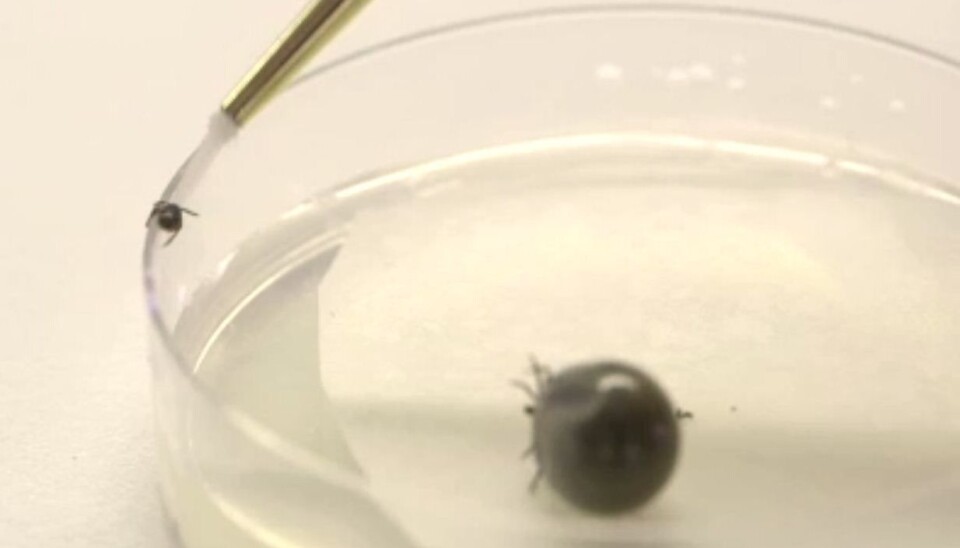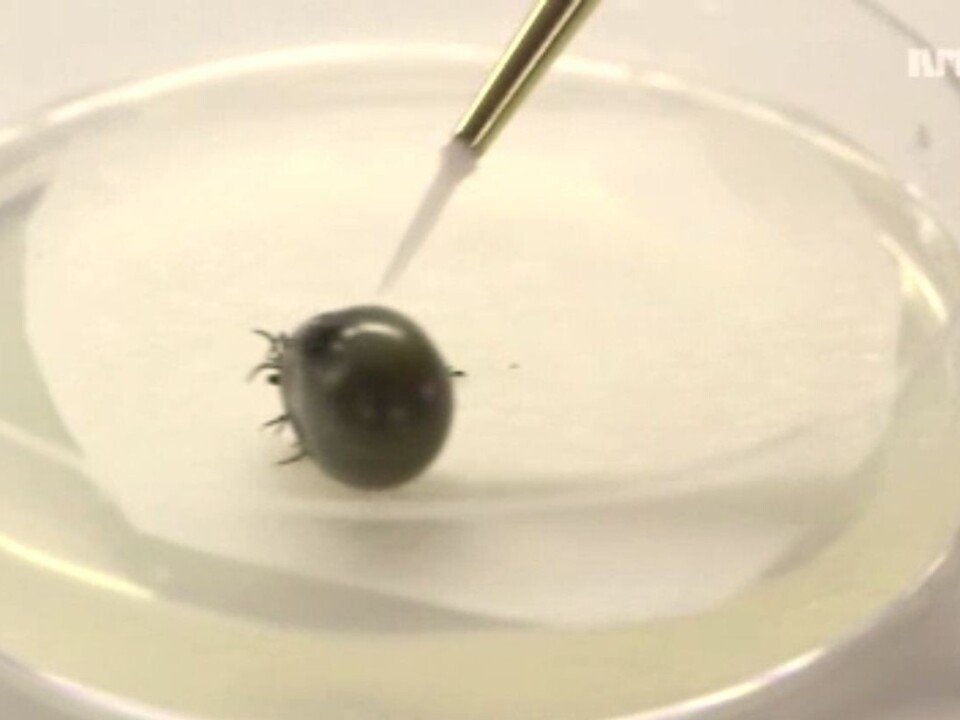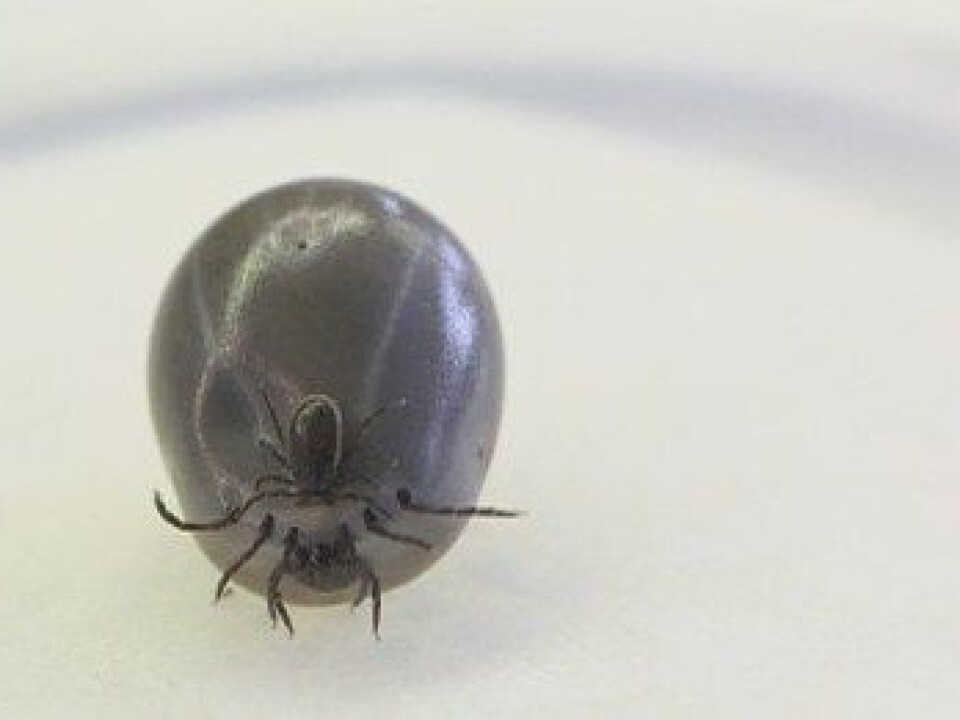
Breeding 3,000 new ticks
Rare pictures show a tiny male tick mating with an enormous female bulging with blood.
Denne artikkelen er over ti år gammel og kan inneholde utdatert informasjon.
It looks absurd but the pictures show the normal difference in size between breeding male and female ticks.
Males generally only mount females who are near-to-bursting with blood and thus are many times larger than the males.
This usually occurs while the female tick is attached to a host, for instance your cat - or you. A close look will occasionally reveal an itsy-bitsy male tick atop the femme fatal.
But when the Norwegian TV programme ‟Schrödingers Katt” paid a visit to the Norwegian Institute for Agricultural and Environmental Research – Bioforsk – scientists got a male to mate in a petri dish.

Watch the video from NRK's homepage here.
Squash them
Researchers involved in the battle against ticks need to know all they can about these arachnids’ reproductive habits. Ingeborg Klingen, who conducts research at Bioforsk on pests like these, says a fertilised female who drinks her fill of blood and drops off to the ground can lay up to 3,000 eggs.
This means it’s wise to remove and destroy female ticks while they are still attached to assure they don’t escape and lay their eggs.
‟If you want to avoid having ticks in your garden you should remove them from your dogs or cats,” advises Klingen.

Male ticks aren’t such a nuisance, because they live only to spread their genes. They do not suck blood from hosts. However, some researchers think males can suck a portion of stolen blood from females while the two are engaged in the act of reproduction.
Packed in wax
Once a fertilised female has quenched her thirst for blood and bids farewell to her victim, she immediately starts laying eggs. Klingen explains that this can be a lengthy process, and can take up to two or three weeks.
The laying of eggs is slow because the female meticulously wraps each egg in a wax package that prevents them from drying out.
The female secretes the wax through a special organ atop her head, which links to the egg-laying organ.

The female, now looking like a deflated balloon, places all these eggs atop her body and dies.
The next generation is left to itself. But they don’t become blood-sucking pests right off. First they have to pass through two seasons in childhood and juvenile stages, as larva and then nymphs, before becoming adult ticks.
‟Adult ticks that suck human blood are three years old,” explains Klingen.
An adult will then ascend a blade of grass and wait for a suitable host to come along. When it finds one, the cycle is repeated.
-------------------------
Read the Norwegian version of this article at forskning.no
Translated by: Glenn Ostling
































